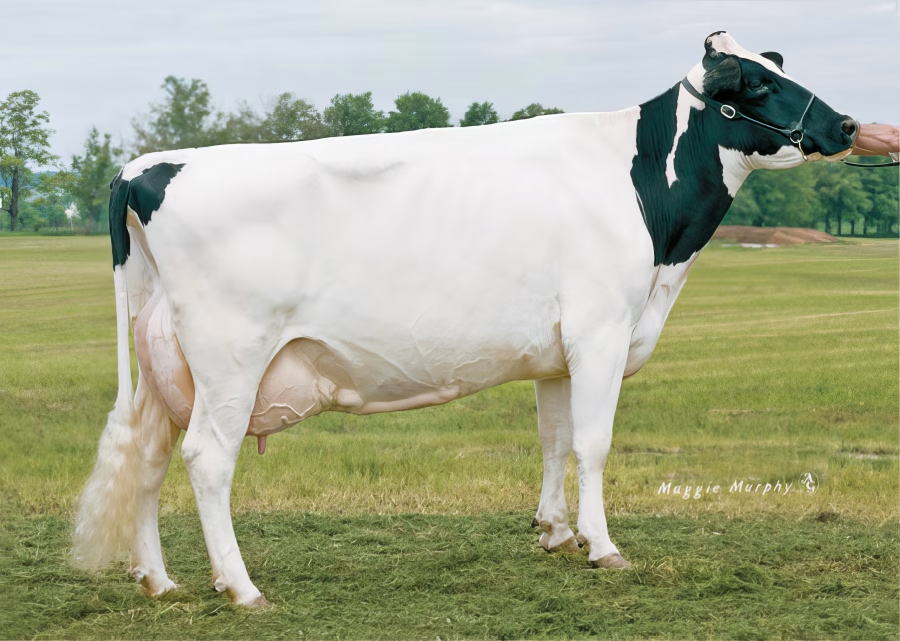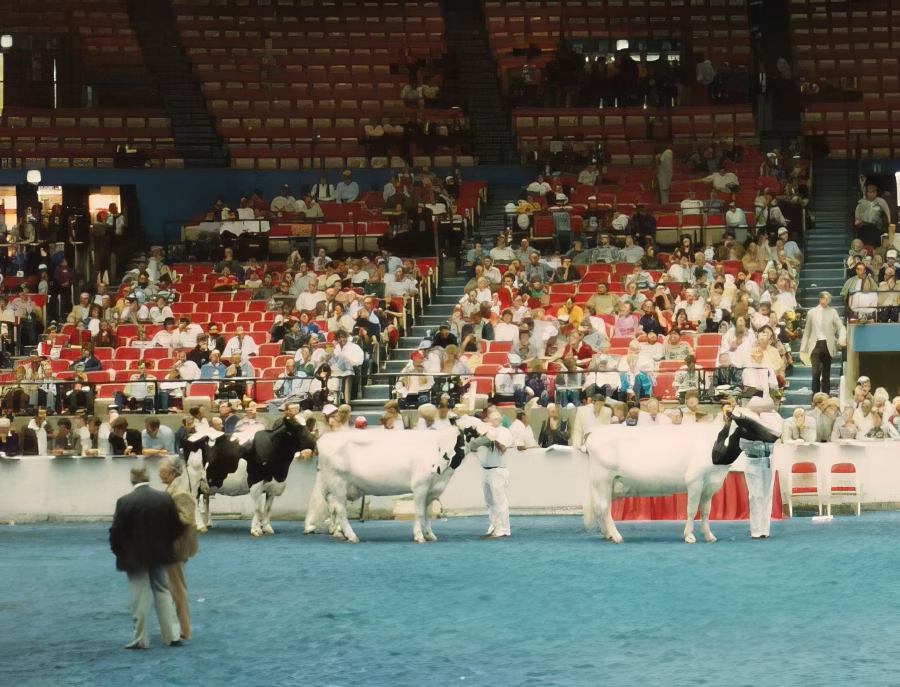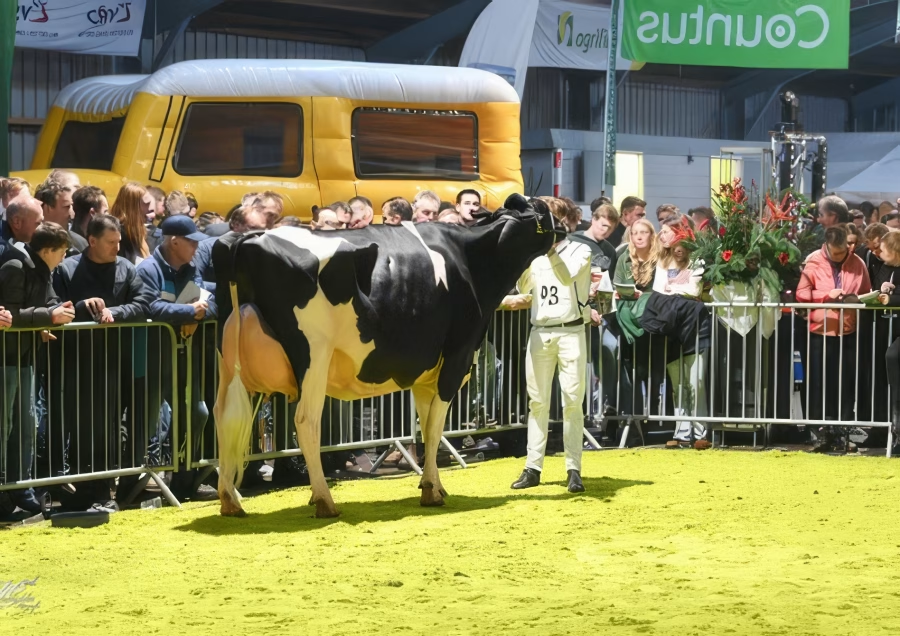Explore Paul Larmer’s remarkable career in dairy cattle genetics. Learn how he drove Semex’s global triumphs and nurtured the next generation of industry leaders.
Imagine spending your whole career changing a sector that feeds millions of people worldwide and being acknowledged by colleagues and rivals for your accomplishments. This is the tale of Paul Larmer, the recently departed CEO of Semex. His career in dairy cow genetics is legendary. Larmer’s stay altered the future of dairy cow genetics and had a significant worldwide effect, winning him the worldwide Person of the Year award at the World Dairy Expo.
“It’s an honor to be recognized by peers, competitors, and colleagues alike,” adds Larmer, reflecting on his recent achievement.
Larmer’s contributions cannot be overemphasized. He led Semex, a market leader in dairy cow genetics, from its Canadian beginnings to a global powerhouse. Today, we want to explore Paul Larmer’s illustrious career, evaluating his accomplishments, problems, and vital ideas for the dairy industry’s future.
Join us as we examine Paul Larmer’s instructive and inspirational life and work. From his favorite bulls to his predictions for the future of artificial insemination, read on to learn about a real industry pioneer’s legacy.
The Fertile Grounds of Blackstock: Paul Larmer’s Early Life and Influences
His family’s farming background profoundly influenced Paul Larmer’s formative years in Blackstock, Ontario. This environment instilled in him a deep-rooted passion for agriculture, laying the foundation for his future in dairy cow genetics. His father’s decision to transition the farm to Guernseys, driven by a local dairy premium for Guernsey Gold Milk, was just one of the early influences that shaped Paul’s understanding of strategic agricultural practices.
Larmer’s early years were also shaped by his membership in 4-H, an organization that empowers youngsters in agricultural areas. His active engagement in 4-H refined his practical skills. It introduced him to mentors who would have a lasting impact on his personal and professional growth. Pioneers in the Holstein sector, such as Morris Jebson and Bob Flett, performed crucial roles throughout these years. They helped Larmer learn essential skills like animal clipping, judging, and providing persuasive reasoning for his judgments, which would be helpful in his future work.
Larmer’s early years were also shaped by his membership in 4-H, an organization that empowers youngsters in agricultural areas. His active engagement in 4-H refined his practical skills. It introduced him to mentors who would have a lasting impact on his personal and professional growth. Pioneers in the Holstein sector, such as Morris Jebsson and Bob Flett, performed crucial roles throughout these years. They helped Larmer learn essential skills like animal cutting, judging, and providing persuasive reasoning for his judgments, which will be helpful in his future work.
Furthermore, Larmer praises his father for fostering humility and a strong work ethic. Paul learned about interpersonal connections and community participation from his father’s committed work in the community and his courteous treatment of others. These early experiences, mentorship, and the supporting framework of 4-H laid the groundwork for Larmer’s later success in the dairy genetics profession, emphasizing the value of early impacts and community relationships. This highlights the importance of early experiences and mentorship in shaping one’s career, a lesson that can be valuable for all professionals.
Foundations of Excellence: University of Guelph and the Ontario Agricultural College Banquet
Paul Larmer’s academic journey took a significant turn when he enrolled at the University of Guelph, where he pursued a Bachelor of Science in Agriculture. This decision shaped his future in agricultural development and dairy genetics, leading to a pivotal moment at the Ontario Agricultural College Banquet.
As master of ceremonies for this event, Paul introduced and talked with significant agricultural industry players. One such individual was David Pellaterio, Vice President of United Cooperatives of Ontario, a farming supply firm with a stake in dairy operations. Following the dinner, David approached Paul and asked him to apply for a job with United Cooperatives of Ontario. Despite having other job offers, this pivotal conversation led Paul to join United Cooperatives of Ontario, where he spent three formative years immersed in the livestock feed business, interacting with influential dairy professionals and laying the groundwork for his future success in dairy cattle genetics.
A Pivotal Career Shift: From United Cooperatives of Ontario to Semex
Paul Larmer’s career at United Cooperatives of Ontario culminated in 1984 when he joined United Breeders as a senior analyst. This was the start of his big adventure with UBI and then with Semex. Larmer’s duties at United Breeders included assessing and studying bull sires, which refined his skills and established the framework for future contributions to Semex. His acute eye for genetics and commitment to growing the dairy sector would characterize his stay and ultimate promotion to CEO at the firm. This change paved the way for significant professional achievements and a lasting effect on the global dairy industry, a testament to the magnitude of his influence.
The Mentorship Mosaic: Shaping Paul Larmer’s Leadership Philosophy
Paul’s path is defined by his accomplishments and the crucial advice he got from various significant leaders in the dairy sector. Among these prominent mentors, Lowell Lindsay stands out as an essential figure. Paul spent five years as a sire analyzer working directly with Lowell, obtaining extensive knowledge of cattle breeding. “Lowell Lindsay was instrumental in shaping my understanding of sire selection and cattle genetics,” Paul tells me. His experience with Lowell taught him to recognize the delicate balance between scientific rigor and practical application in breeding procedures.
Merv McQuarrie, Paul’s second key mentor, exposed him to the worldwide dynamics of the dairy sector. Merv taught him the intricacies of arranging tours and promoting Daughters of Bulls, stressing a kind yet practical leadership approach. “Merv’s soft-spoken approach and humility left a lasting impression on me,” Paul adds. These encounters with Merv enlarged Paul’s viewpoint and improved his ability to manage the global dairy stage.
Paul’s perspective of mentoring and leadership is firmly anchored in the ideals imparted by his mentors. He believes in treating others with dignity and humility, values he admires in his father and mentors. Paul stresses the value of friendly connections and cooperation above antagonistic encounters, even with rivals. He believes this approach is critical for the dairy industry’s collaborative progress. His humility and dedication to his work serve as an inspiration for all those in the industry.
He also believes in the “multiplier effect”—The notion that the most tremendous success comes from one’s impact on others. Paul hopes to leave a lasting legacy via the individuals he has taught by developing talent and creating a supportive atmosphere. “If I’ve had an impact on making their lives better and, in turn, made the company better, that’s my measure of success,” says the man. Therefore, Paul’s leadership style is dedicated to personal development, team building, and industry-wide cooperation.
Pioneering a Global Footprint: Strategic Expansion and International Diversification Under Paul Larmer
Under Larmer’s leadership, Semex saw unprecedented development and reinvention, establishing the firm as a powerful worldwide competitor in the dairy genetics market. He was vital in Semex’s expansion outside Canadian boundaries, a strategic goal that required significant risk and expenditure. Under this guidance, Semex expanded manufacturing sites throughout Europe, notably Hungary and Brazil in South America. This ensured a robust worldwide presence and diversity. This strategic development was reinforced by establishing 15 foreign subsidiaries, reaffirming Semex’s commitment to serve a global market and allowing the business to outperform itself globally.
Paul Larmer’s Semex Legacy
- Paul Larmer was a remarkable 17-year Semex CEO who embodied transforming leadership distinguished by strategic understanding and commitment to excellence. Larmer encouraged creativity by prioritizing infrastructure and modern technologies, positioning Semex in a leading position in cattle genetics research. Under his direction, the business grew internationally and sold genes to more than eighty nations.
- Larmer’s tenure at Semex was marked by the success of several ‘Millionaire Sires,’ bulls that sold over a million doses of semen. These bulls, such as Comestar Leader and Mainstream Manifold, played a crucial role in the company’s commercial success and reputation in the industry.
- Among other strategic choices Larmer made were long-term alliances with SwissGenetics and others, which were vital for furthering genetic research and improving product variety. He also supported environmental projects, best seen by the Methane Efficiency Index’s 2023 debut in collaboration with Lactanet.
- Under his direction, Semex brought 70 Holstein Premier Sire flags from the World Dairy Expo and the Royal Winter Fair. Larmer transformed herd health and welfare by including technologies like the genetic testing program Elevate, ensuring Semex’s preeminence in cow breeding. His continuing influence on the business is shown by his ability to move Semex from a national organization to a worldwide cattle genetics supplier.
- Under Larmer, Semex changed from selling Canadian genetics to offering complete worldwide solutions in cow genetics. This change comprised customized agricultural methods and breeding plans for many climates. Collaborating with Lactanet, Semex’s release of the Methane Efficiency Index emphasizes its dedication to sustainability and responsible genetic innovation.
- Larmer’s emphasis on innovative research and development significantly improved the quality and variety of Semex’s products. Semex provides genetic answers that increase herd health, productivity, and profitability globally by using cutting-edge technologies and encouraging a culture of ongoing improvement. Semex’s genes are employed in over 80 countries today, reflecting Larmer’s innovative leadership and ongoing influence.
Building Bridges: Semex’s Strategic and Transformative Initiatives in China
Semex’s significant experience in China demonstrates the remarkable synergy formed by bilateral agreements and strategic planning. The cooperative’s voyage to China started with an essential bilateral agreement between the Canadian and Chinese governments. Recognizing the need to improve China’s dairy business, the agreement identified Canada and Semex as significant players in achieving this transition.
Semex was tasked with managing the integrated cow breeding project. This task included sending experts and trainers to China to establish crucial initiatives like milk recording and to give extensive training. This effort trained nearly 65,000 people in China, considerably improving their understanding of dairy management and breeding techniques. Dr. Claire Rennie’s well-deserved Friendship of China award demonstrates the enormous effect of his work.
Semex expanded its footprint by establishing a genetic production facility in China as part of this bilateral agreement. Although this plant was later sold back to the Chinese government, the influence of Semex’s pioneering work is still seen today in the industry. Furthermore, Semex’s formation of a retail subsidiary has ensured its high-quality genetic material is widely distributed, even when the political and commercial environments change.
The Bulls That Built Semex: Paul Larmer’s Iconic Lineup
Among the highlights of Paul Larmer’s distinguished career at Semex are the exceptional bulls that define the company’s genetic perceptiveness. The Comestar bulls, particularly those from the famed Comestar Laurie Sheik cow line, have a special place in Larmer’s career. This outstanding lineage produced several millionaire sires, a rare achievement done twice, demonstrating Semex’s genetic power and long-standing cooperation with the Comtois family. Larmer’s link to these bulls exemplifies the profound connections that have propelled Semex to industry leadership.
Ladino Park Talent is one of Larmer’s favorites due to his tenacity and dedication to attain the milestone of the million doses. Despite health issues, Talent’s progress exemplifies the commitment and competence of Semex’s animal care staff.
Mainstream Manifold has also performed well under Larmer’s leadership. Manifold signified a paradigm change for Semex as it moved away from conventional show-winning sires and toward commercial dairy farming demands. Manifold, known for features such as excellent fertility and health, was critical in widening Semex’s appeal and consolidating its name in the competitive, large-scale dairy farming business. This strategic change is consistent with Larmer’s strategy of adjusting to market developments while increasing the practical usefulness of Semex’s genetic services.
Each of these bulls generated significant revenue and played critical roles in determining Semex’s genetic orientation and market reputation. Their results relate to Larmer’s strategic efforts and extensive knowledge of global dairy business dynamics.
A Golden Jubilee: Celebrating Semex’s Legacy and Vision
The 50th anniversary of Semex was more than simply a commemorative event in May 2024. It was a showcased tapestry of history, accomplishments, and fellowship. Among the highlights was the much-anticipated presentation of the painting of the Six Millionaire Club animals, representing the fantastic bulls that have contributed significantly to the company’s success. This artistic tribute exemplified the superior genetics that Semex has championed for decades.
However, the memorial extended beyond the bulls. The ceremony recognized the visionary achievements of pioneers such as Robert Chicoine and Gordon Souter. During the critical stages of Semex’s growth, its fundamental leadership was acknowledged as essential to its current position. These industry veterans were recognized for their practical attitude and strategic ideas, which have helped Semex succeed in a competitive worldwide market.
The event also served as a meeting place for past and current executives, including multiple foreign awardees, demonstrating the close-knit but vast community that defines the global dairy business. It was a week of introspection and forward-thinking debates, commemorating a watershed moment and celebrating the past while motivating the future.
A Vision for Tomorrow: Navigating Advancements and Obstacles in the Dairy AI Sector
Paul Larmer expects significant future progress in the AI industry. He emphasizes that agricultural consolidation will continue, fueled by the desire for efficiency, resulting in fewer but bigger farms. These developments will require industry adaptation and cooperation.
Larmer warns of rising political trade barriers, with the focus changing from animal health concerns to more politically driven restrictions. This transition necessitates deliberate risk mitigation and a variety of manufacturing sites to maintain global market access.
Larmer also highlights the importance of data usage. Combining agricultural data, sensor technologies, and proprietary trait research can transform genetic firms. He emphasizes the necessity of cooperation among breed organizations, milk recording institutions, and genetic corporations in turning data into value-added goods for farmers.
Sustainability remains a top priority, with Larmer calling for proactive planning in collaboration with processors. He emphasizes the need for methane efficiency, sustainable agricultural techniques, and the industry’s ability to satisfy new rules and customer expectations. Larmer’s perspective highlights the need for ongoing adaptation, creativity, and cooperation in navigating the changing world of AI and dairy farming.
Fostering Future Leaders: Paul Larmer’s Profound Community Engagements
Paul Larmer’s community participation demonstrates his dedication to supporting future generations and fostering agricultural excellence. His enormous contributions to 4-H, a program near his heart, have been significant. Larmer has served as head of the 4-H Foundation and is a strong champion for youth development via dairy activities and mentoring. His commitment to 4-H demonstrates his confidence in developing young people’s leadership qualities and agricultural expertise, ensuring they have the same possibilities that formed his career.
In addition to his 4-H commitment, Larmer has been a driving force in dairy youth activities, consistently supporting projects that prepare the next generation for a career in agriculture. His efforts have not gone unnoticed, as many of those he has mentored have gone on to make substantial contributions to the dairy business.
Larmer’s effect goes beyond 4-H and dairy youth programs to his Royal Agricultural Winter Fair presidency. In this capacity, he has worked relentlessly to bridge the divide between urban and rural communities, bringing agricultural innovation and quality to a broader audience. Under his leadership, the fair has remained an essential platform for honoring and developing agricultural practices, creating more excellent public knowledge and enthusiasm for the sector.
Paul Larmer has made an indelible impression on the community via his multifarious efforts, encouraging youth development and education while promoting agricultural pride and sustainability.
Paul Larmer’s Next Chapter: Rekindling Athletic Passions and Personal Connections in Retirement
Throughout his rigorous profession, Paul Larmer found comfort and balance in his love of sports. Paul, a competitive curler, spent a lot of time on the ice and had some success until his enormous travel schedule made it difficult to continue at a high level. Paul’s athletics also included marathon running, which he gladly completed by exceeding his time objectives.
As Paul prepares to retire, he looks forward to reconnecting with his origins in these activities. “There’s a road bike waiting for me,” he said, underlining his desire to maintain decent physical form while decreasing the stress connected with his professional obligations. Beyond athletics, Paul is looking forward to spending more time with his family and close friends, and he appreciates their sacrifices in support of his remarkable career. For Paul, retirement is a fresh beginning, with the possibility of rediscovering old hobbies and cultivating critical personal connections.
The Bottom Line
Paul Larmer’s remarkable work in dairy cow genetics has had a lasting impression on the worldwide business. During his stint as CEO of Semex, he oversaw significant worldwide development, revolutionary innovation, and a tireless emphasis on mentoring, setting a standard in the area. This year, when he takes the stage at the World Dairy Expo to accept the International Person of the Year award, Larmer plans to reflect on his accomplishments and the vital connections that have paved his way.
Larmer’s story demonstrates the transforming potential of devotion and teamwork in raising industry standards. As he reconnects with friends and celebrates this occasion with his family, he leaves a legacy of humble and foresightful leadership. Future industry leaders should take inspiration from Larmer’s consistent dedication to innovation, mentoring, and worldwide collaboration. His narrative is a powerful reminder of the immense influence that one person can have on an entire industry, inspiring each of us to contribute in ways that reverberate internationally and benefit future generations.
Key Takeaways:
- Paul Larmer’s early life on a family farm in Blackstock, Ontario, laid the foundation for his passion for the dairy industry.
- The 4-H program played a significant role in his development, providing essential skills and mentorship.
- Larmer’s education at the University of Guelph set the stage for his career in dairy cattle genetics.
- His first job was secured by taking an active role at an event, showcasing the importance of seizing opportunities.
- Mentorship from industry leaders like Lowell Lindsey and Merv McCory significantly influenced his leadership style and professional ethics.
- Under Larmer’s leadership, Semex transformed from a Canadian entity to a global company with production centers in Europe and Brazil.
- Larmer emphasizes the importance of collaboration and treating competitors with respect for mutual benefit.
- His contributions to the dairy industry have been recognized globally, including a significant impact in China.
- Community involvement and youth mentorship are central to Larmer’s legacy and personal mission.
- In retirement, Larmer looks forward to reconnecting with personal interests, such as sports, and spending more time with family and friends.
Summary:
Paul Larmer, the recently retired CEO of Semex, discusses his extensive career in the dairy cattle genetics industry, sharing insights and experiences that have shaped his professional journey and the industry at large. With a commitment to excellence and a deep involvement in global operations, Larmer’s story is a testament to the impact of visionary leadership. From humble beginnings on a family farm in Blackstock, Ontario, to leading Semex to international prominence, Larmer’s career is marked by strategic expansion, mentorship, and enduring contributions to the dairy sector. As he reflects on his legacy, Larmer also talks about his favorite bulls, critical successes, and future directions for artificial intelligence in agriculture, underscored by his dedication to community and youth engagement.







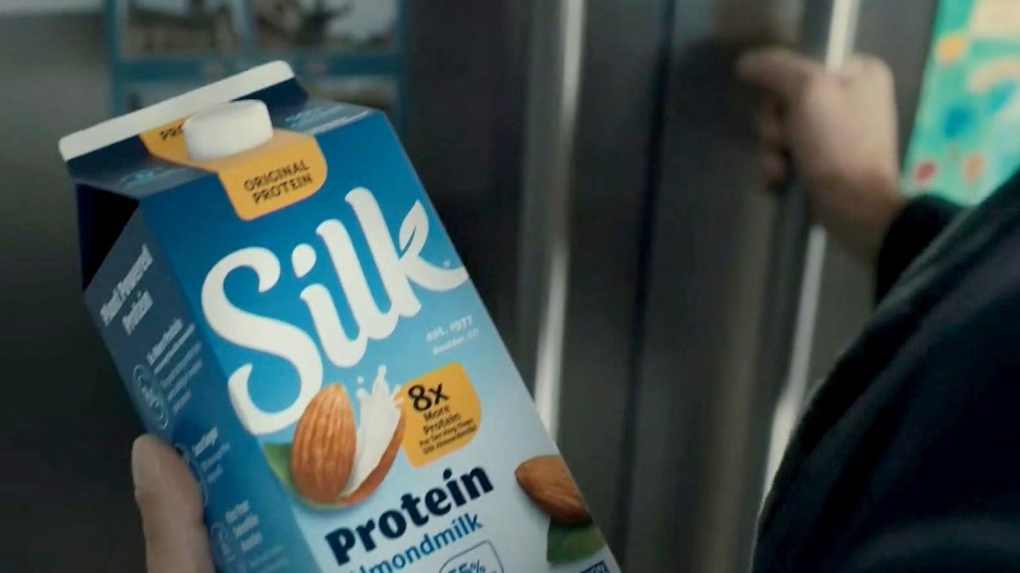
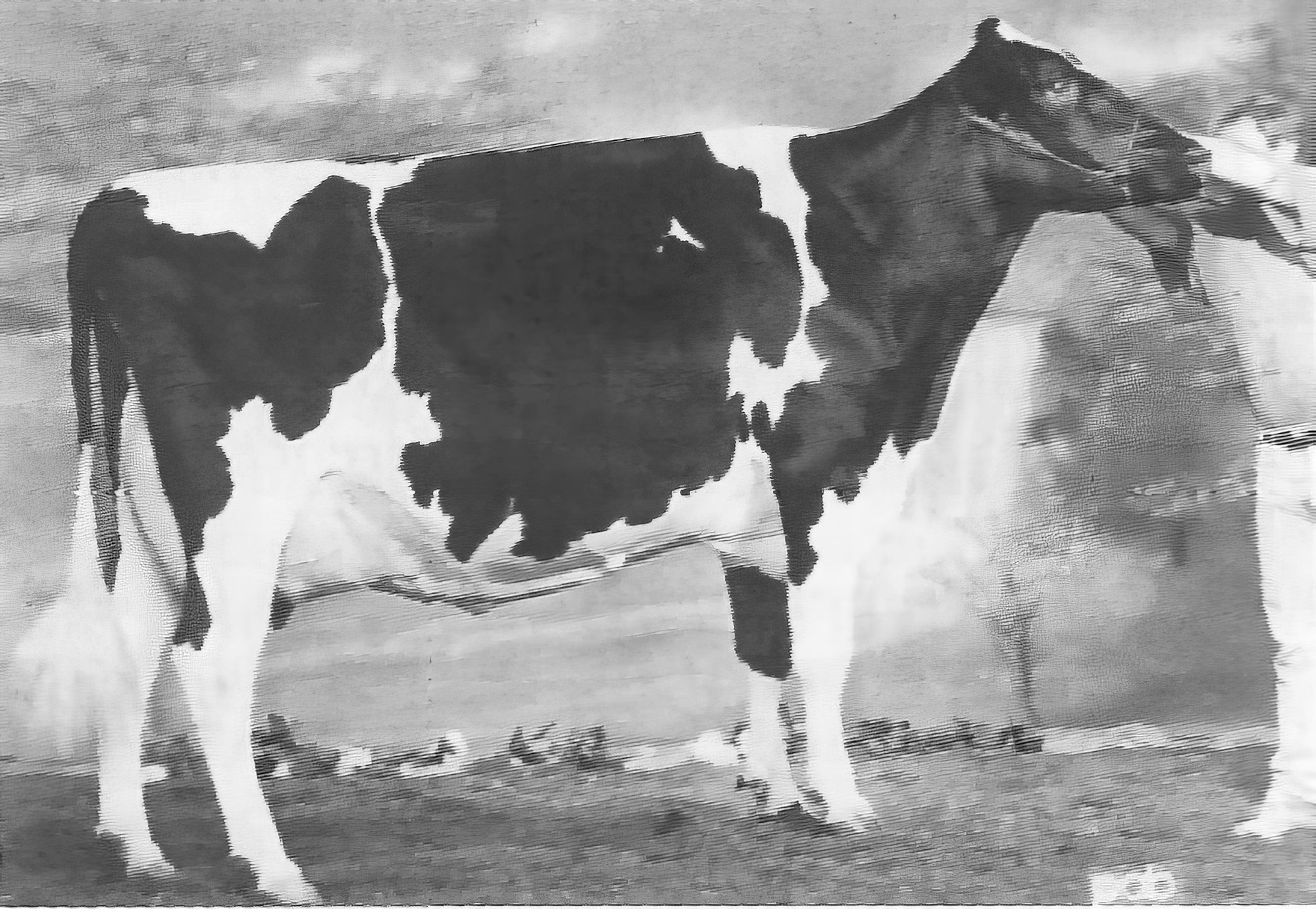
 David Brown, like all of us, had his flaws. Endowed with remarkable skills as a breeder, showman, and promoter, he was often hailed as the finest cattleman of his era. Growing up on Browndale Farms in Paris, Ontario, he had towering expectations to meet. His father, R.F. Brown, was a luminary in the dairy world, winning the esteemed Curtis Clark Achievement Award in 1988 and the Klussendorf Trophy at the 1993 World Dairy Expo. As one of Canada’s most successful breeders, R.F. clinched Premier Breeder and Exhibitor honors at the World Dairy Expo and the Royal Winter Fair. His accolades included five Grand Champions at the Royal Winter Fair: Green Elms Echo Christina (1972 and dam of Browndale Commissioner), Vanlea Nugget Joyce (1974), Marfield Marquis Molly (1978), and Du-Ma-Ti Valiant Boots Jewel (1988). David certainly had big shoes to fill. And fill them he did. His list of accomplishments was extensive: He led Ontario’s top herd in production in 1991, bred two All-Canadian Breeder’s Herd groups, and produced the All-American Best Three Females in 1998. He was twice crowned Premier Breeder at the International Holstein Show and accumulated 92 awards in All-Canadian and All-American contests from 1986 through 2004. Yet, despite two auction sales in 1991 and 1996 aimed at reducing his debts, financial relief was elusive. Over time, his wife left him, his children moved away, and his prized cattle were sold off. Eventually, David relocated to Colombia, where he passed away. Views on Brown are mixed—some saw him as a charming inspiration, while others regarded him as a rule-bending showman or an irresponsible debtor. Nonetheless, his rapid ascent and remarkable achievements in his lifetime are indisputable. Many wealthy individuals have invested vast sums of money into the cattle industry, chasing the same recognition, only to leave empty-handed. What distinguished David Brown was his nearly mystical talent for preparing animals for the show ring and transforming them into champions.
David Brown, like all of us, had his flaws. Endowed with remarkable skills as a breeder, showman, and promoter, he was often hailed as the finest cattleman of his era. Growing up on Browndale Farms in Paris, Ontario, he had towering expectations to meet. His father, R.F. Brown, was a luminary in the dairy world, winning the esteemed Curtis Clark Achievement Award in 1988 and the Klussendorf Trophy at the 1993 World Dairy Expo. As one of Canada’s most successful breeders, R.F. clinched Premier Breeder and Exhibitor honors at the World Dairy Expo and the Royal Winter Fair. His accolades included five Grand Champions at the Royal Winter Fair: Green Elms Echo Christina (1972 and dam of Browndale Commissioner), Vanlea Nugget Joyce (1974), Marfield Marquis Molly (1978), and Du-Ma-Ti Valiant Boots Jewel (1988). David certainly had big shoes to fill. And fill them he did. His list of accomplishments was extensive: He led Ontario’s top herd in production in 1991, bred two All-Canadian Breeder’s Herd groups, and produced the All-American Best Three Females in 1998. He was twice crowned Premier Breeder at the International Holstein Show and accumulated 92 awards in All-Canadian and All-American contests from 1986 through 2004. Yet, despite two auction sales in 1991 and 1996 aimed at reducing his debts, financial relief was elusive. Over time, his wife left him, his children moved away, and his prized cattle were sold off. Eventually, David relocated to Colombia, where he passed away. Views on Brown are mixed—some saw him as a charming inspiration, while others regarded him as a rule-bending showman or an irresponsible debtor. Nonetheless, his rapid ascent and remarkable achievements in his lifetime are indisputable. Many wealthy individuals have invested vast sums of money into the cattle industry, chasing the same recognition, only to leave empty-handed. What distinguished David Brown was his nearly mystical talent for preparing animals for the show ring and transforming them into champions.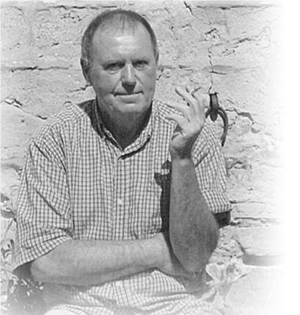 Edward Young Morwick, a distinguished author, cattle breeder, and lawyer, was born in 1945 on the Holstein dairy farm owned by his father, Hugh G. Morwick. His early memories of his mother carrying him through the cow aisles profoundly shaped his trajectory. Although Edward pursued a career in law, excelling immediately by finishing second out of 306 in his first year, he harbored a deep-seated passion for journalism. This led to his later work chronicling Holstein’s cow history. His seminal work, “The Chosen Breed and The Holstein History,” stands as a cornerstone for those delving into the evolution of the North American Holstein breed. In it, he compellingly argues that the most influential bulls were those of the early historical period. (Read more:
Edward Young Morwick, a distinguished author, cattle breeder, and lawyer, was born in 1945 on the Holstein dairy farm owned by his father, Hugh G. Morwick. His early memories of his mother carrying him through the cow aisles profoundly shaped his trajectory. Although Edward pursued a career in law, excelling immediately by finishing second out of 306 in his first year, he harbored a deep-seated passion for journalism. This led to his later work chronicling Holstein’s cow history. His seminal work, “The Chosen Breed and The Holstein History,” stands as a cornerstone for those delving into the evolution of the North American Holstein breed. In it, he compellingly argues that the most influential bulls were those of the early historical period. (Read more: 